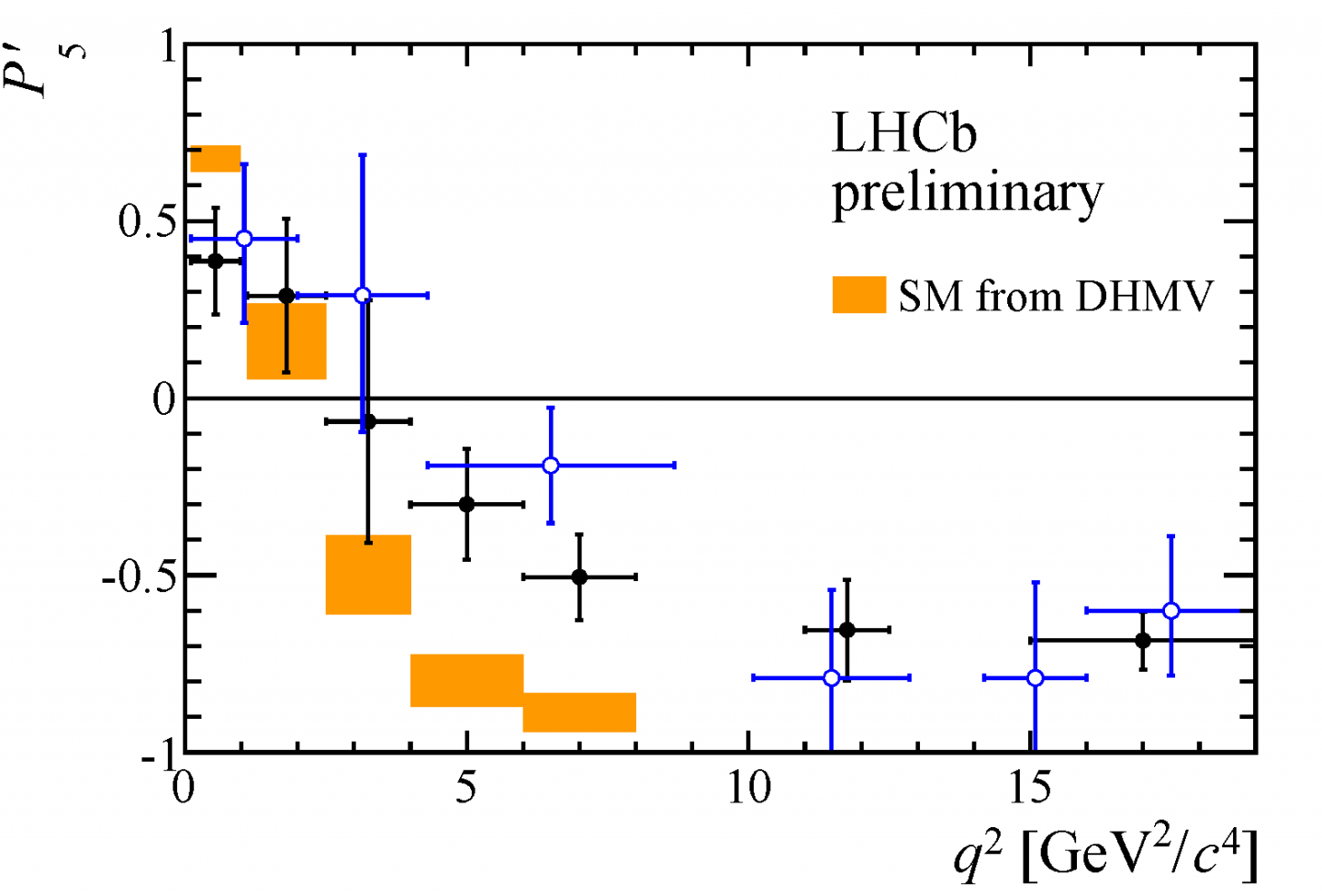Today, at the 50th Moriond Electroweak conference (La Thuile, Italy), LHCb physicists presented an analysis, which show deviations from Standard Model calculations.
The Standard Model describes elementary particles and their behaviour. Even though it is currently the best description there is of the subatomic world, it does not explain the complete picture. Some phenomena remain unexplained. That’s why theoreticians have developed models beyond the Standard Model, which would complete the picture. Experiments at the LHC are looking for hints of this “new physics”, which would include yet undiscovered particles.
The LHCb (Large Hadron Collider beauty) experiment searches for new physics by looking for the effects of possible new particles in rare decays of B particles, particles that contain a beauty quark. These "indirect searches" allow them to probe mass scales inaccessible by other techniques.
In this search, LHCb physicists have been studying the angular distribution of the particles coming from one of these rare B particle decays (B → K*μμ), a parameter that is highly sensitive to the effects of new particles. "This decay is a laboratory on its own," said Patrick Koppenburg, LHCb Physics Coordinator. "Many of the particles that CERN experiments search for in their data can be studied in this decay."
In their analysis of the full LHC Run 1 data set, LHCb physicists found a local deviation from Standard Model calculations. The results confirm a previously published analysis using 2011 LHCb data.
These new results are certain to draw the attention of physicists worldwide, as theorists consider the many possible implications. Theoretical predictions of the Standard Model values (in orange on the graph) are also expected to be further improved.
Read the full version of this article here.

